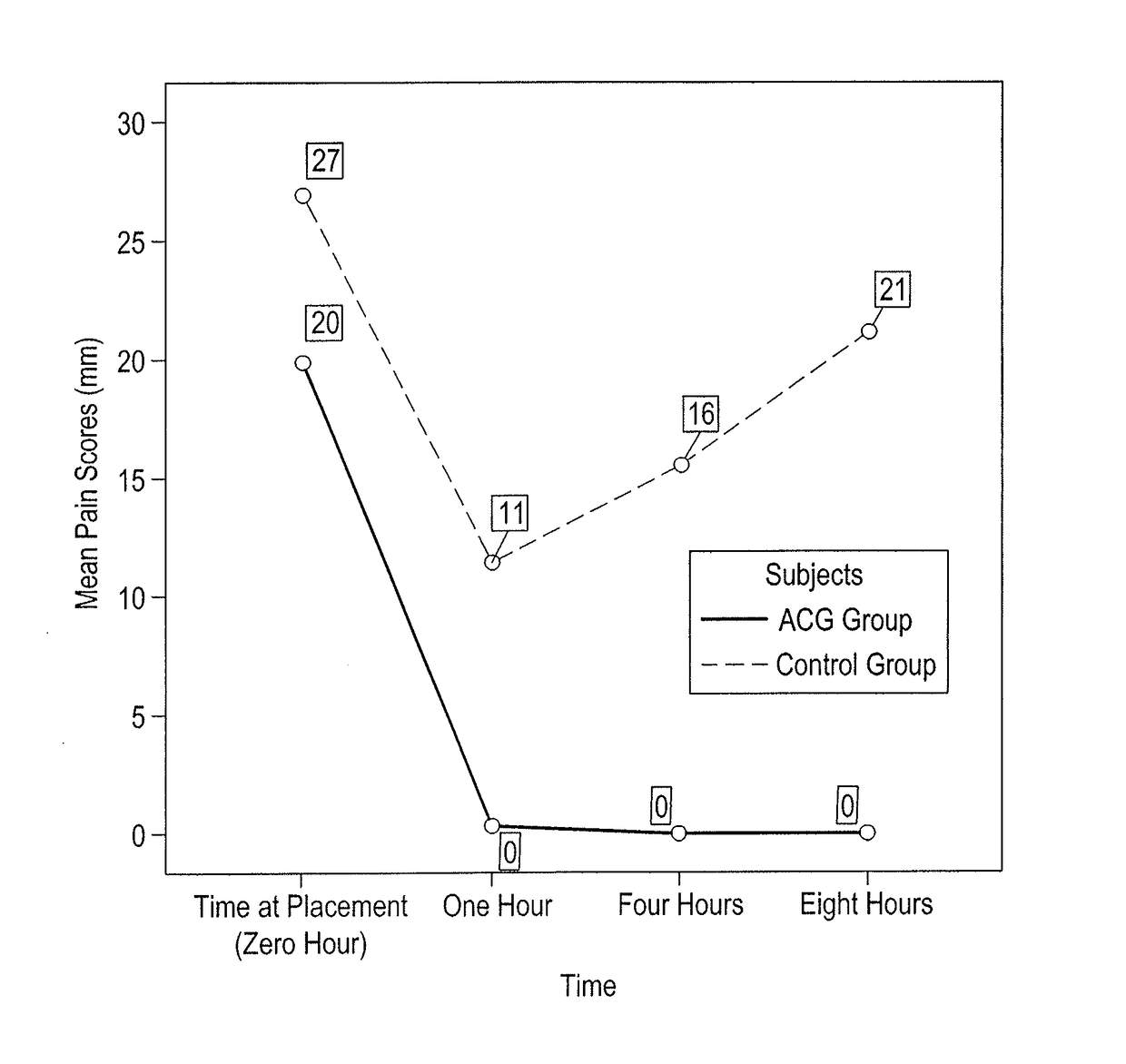Anesthetic chewing gum
a chewing gum and anesthetic technology, applied in the field of oral pain relief, can solve the problems of tooth separation, affecting the patient's chewing, affecting the patient's acceptance and compliance, and tenderness and pain,
- Summary
- Abstract
- Description
- Claims
- Application Information
AI Technical Summary
Benefits of technology
Problems solved by technology
Method used
Image
Examples
example 1
[0017]The preparation of local anesthetic-containing chewing gum formulation was investigated using Food and Drug (FDA) certified ingredients.
[0018]Several preliminary trials were performed to optimize the anesthetic drug content and other necessary functional excipients to prepare the chewing gum tablets by direct compression technique. Each tablet contained 2 mg of each of the two tested local anesthetics; lidocaine and prilocaine, in addition to peppermint oil as a flavoring agent.
[0019]All of the solid ingredients were passed individually through 40# sieve before weighing, in order to ensure uniform size distribution. The two anesthetic drugs were alternately mixed on a glass slab in sequence with talc, magnesium stearate, titanium dioxide, mannitol, sorbitol, menthol and Aerosil® in geometric proportion. This blend was then mixed geometrically with the gum base. Finally peppermint oil was added drop wise and mixed. The granules were kept for air drying for 30 minutes and then m...
example 2
[0022]The final granule blend was directly compressed into tablets on a single station compression machine (Erweka EKO, GmbH, Germany) using a set of 10 mm round standard concave punches and die.
[0023]The tablets were tested for color, taste, dimensions and freedom from any physical flaws. The dimensions of six tablets were measured using a Vernier Caliper (Draper Expert Tool Ltd., UK), and the average weight (±SD) was calculated. The tablets were off-white color, round, with a smooth surface, had a mint odor and were free from physical flaws. The taste and consistency were acceptable. The tablets had an average diameter of 10.02 mm±0.040, and a thickness of 6.56 mm±0.119. At a constant hardness, tablet thickness tends to vary with changes in die fill and with particle size distribution.
[0024]The weight of tablets was routinely measured during compression in order to ensure that each tablet contains the proper amount of drug. The weight variation test was performed by selection of t...
example 3
[0026]A case-control study was conducted at Kuwait University, Faculty of Dentistry Dental Clinic in Kuwait. The study's drug formulation, design and protocol were approved by the Ethical Committee of the Health Sciences Center at Kuwait University.
[0027]Forty seven voluntary subjects, between 23 and 41 years of age, were approached. The subjects were undergraduate 7th year dental students, academic staff members including assistant professors, and dental assistants from the Faculty of Dentistry, Kuwait University, Kuwait. The subjects' rights have been protected, and a written informed consent was obtained from each of the forty subjects participating in this study.
[0028]A person was eligible to participate if s / he fulfilled the following inclusion criteria: 1) medically healthy subjects with no history of allergies to any of the anesthetic ingredients, 2) individuals with healthy temporomandibular joints, 3) healthy gingival tissues, 4) sound and intact posterior teeth and 5) tigh...
PUM
| Property | Measurement | Unit |
|---|---|---|
| Weight | aaaaa | aaaaa |
| Mass | aaaaa | aaaaa |
| Mass | aaaaa | aaaaa |
Abstract
Description
Claims
Application Information
 Login to View More
Login to View More - R&D
- Intellectual Property
- Life Sciences
- Materials
- Tech Scout
- Unparalleled Data Quality
- Higher Quality Content
- 60% Fewer Hallucinations
Browse by: Latest US Patents, China's latest patents, Technical Efficacy Thesaurus, Application Domain, Technology Topic, Popular Technical Reports.
© 2025 PatSnap. All rights reserved.Legal|Privacy policy|Modern Slavery Act Transparency Statement|Sitemap|About US| Contact US: help@patsnap.com

